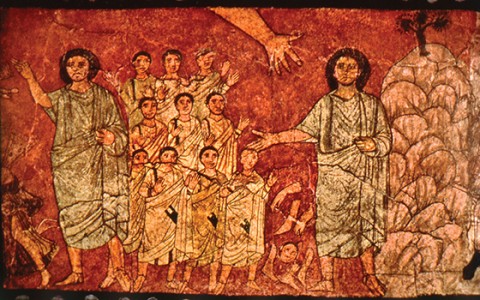Ezekiel and the Valley of Life, fresco, ca. 239

The prophet Ezekiel was an important figure for the Jewish community in Dura-Europos in the first two centuries of the Common Era. The synagogue at Dura, in present-day Syria, contained three murals recounting the history of Israel from the ancestral period through the exile and resettlement of the land. This panel depicts the prophet’s vision in chapter 37 of the book of Ezekiel, in which God brings dry bones to life. This vision of resurrection in a valley of bones was a prophecy pointing to the end of the exile and the restoration of the Jews to their previous national life. In the painting, Ezekiel (depicted twice) stands in the valley defined by the mountain on the right. At his feet are body parts. The hand of God reaches down and re-members the corpses as Ezekiel points to the ten robed figures who represent restored Israel. A second figure of Ezekiel points the way forward for the community. For Jews living in a remote Roman military outpost along the Euphrates river, the scene would have formed a core element of hope in a restored political and religious identity.





